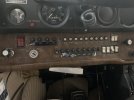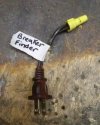You are using an out of date browser. It may not display this or other websites correctly.
You should upgrade or use an alternative browser.
You should upgrade or use an alternative browser.
Is it possible to manually trip the flush circuit breakers?
- Thread starter maduro
- Start date
I don’t think you can?
Larry in TN
En-Route
From the title, I thought you were trying to disable the aircraft's lav...
I don't know of any way to trip the CBs that you can't grab and pull.
I don't know of any way to trip the CBs that you can't grab and pull.
maduro
Pre-Flight
- Joined
- Jun 20, 2013
- Messages
- 67
- Display Name
Display name:
Maduro
Yea.... I did it to get your attention!! lolFrom the title, I thought you were trying to disable the aircraft's lav...
I don't know of any way to trip the CBs that you can't grab and pull.
maduro
Pre-Flight
- Joined
- Jun 20, 2013
- Messages
- 67
- Display Name
Display name:
Maduro
I had electric trim installed on my yoke and I want to be able to turn it off incase of a runaway.From the title, I thought you were trying to disable the aircraft's lav...
I don't know of any way to trip the CBs that you can't grab and pull.
kgruber
Final Approach
Change the circuit breaker to pullableI had electric trim installed on my yoke and I want to be able to turn it off incase of a runaway.
Greg Bockelman
Touchdown! Greaser!
- Joined
- Feb 23, 2005
- Messages
- 11,093
- Location
- Lone Jack, MO
- Display Name
Display name:
Greg Bockelman
^^^^^Change the circuit breaker to pullable
This.
- Joined
- Dec 5, 2010
- Messages
- 5,152
- Display Name
Display name:
GeorgeC
Nope, and if you're thinking "hmm, maybe I can pop it out with this pointy object...", you'll just gouge up the plastic.Is it possible to manually trip the flush circuit breakers? The mushroom head ones you can pull but how do you manually trip the flush mount breakers? Thanx.
No. Only options are to install trim disconnect switch or replace CB with a resettable type. Or both if the trim motor gets power from two different sources.Is it possible to manually trip the flush circuit breakers?
PaulMillner
Line Up and Wait
add a push button to power the landing light from the 3 amp trim breaker. It will pop quickly! Or, change the breaker to Klixon like the rest of us have.how do you manually trip the flush mount breakers?
Let'sgoflying!
Touchdown! Greaser!
I can do it, but it involves sparks.
GaryM
Pattern Altitude
The best things always do.I can do it, but it involves sparks.
Dan Thomas
Touchdown! Greaser!
- Joined
- Jun 16, 2008
- Messages
- 10,765
- Display Name
Display name:
Dan Thomas
Oh, no. One has to get sophisticated. Install a switch that grounds the output terminal of the breaker. Sparks are hidden inside the switch. The breaker will pop.I can do it, but it involves sparks.
Note to newbies: this is not a serious suggestion. I have popped breakers intentionally for troubleshooting purposes by shorting the output, but people without electrical savvy can do a lot of damage fooling with it.
Half Fast
Touchdown! Greaser!
No. Only options are to install trim disconnect switch or replace CB with a resettable type. Or both if the trim motor gets power from two different sources.
The trim circuit breaker on my Beech is of the pullable type, but it will also trip in a runaway if I just grab and hold the trim wheel. In fact, the owner's manual recommends this as the way to handle a runaway (I suspect the plane had a non-pullable breaker when the manual was written). Holding the trim wheel while commanding trim might work on @maduro 's plane to pop the breaker.
Dan Thomas
Touchdown! Greaser!
- Joined
- Jun 16, 2008
- Messages
- 10,765
- Display Name
Display name:
Dan Thomas
That would depend on whether the cable tension and clutch setting were up to spec. Otherwise, there could be enough slippage that the motor doesn't load up enough to pop the breaker.Holding the trim wheel while commanding trim might work on @maduro 's plane to pop the breaker.
Worn cable capstans also have little grip on the cable even at specified tensions.
Ed Haywood
En-Route
I popped my landing light circuit a few weeks ago. Had not yet put insulating tubing over the knife blade connector to the cowl. Was testing my switches and the connector touched the firewall. No sparks or anything. A 5 amp breaker goes quick, about 1/100th of a second I believe.
Mtns2Skies
Final Approach
- Joined
- Jul 12, 2008
- Messages
- 5,622
- Display Name
Display name:
Mtns2Skies
Ed Haywood
En-Route
Seems like that would be good design practice. Worst case, turn off the master.No. Only options are to install trim disconnect switch or replace CB with a resettable type. Or both if the trim motor gets power from two different sources.
Dan Thomas
Touchdown! Greaser!
- Joined
- Jun 16, 2008
- Messages
- 10,765
- Display Name
Display name:
Dan Thomas
Now there's a tool I don't have. Yet.
Supereri
Pre-takeoff checklist
- Joined
- Apr 5, 2022
- Messages
- 114
- Display Name
Display name:
Supereri
I'm having panel work done on my 182. One of the items was moving from the flush mount to the pullable circuit breakers for this exact reason. I bought some used Klixon for like $10 each and since the panel is apart and being newly cut there was no additional installation charges.
If you go this way there are a ton of them in aircraft salvage yards and they're a lot cheaper than what Spruce charges.
If you go this way there are a ton of them in aircraft salvage yards and they're a lot cheaper than what Spruce charges.
You haven't made an in promptu field fabricated one yet? I'm Shocked!Now there's a tool I don't have. Yet.
Dan Thomas
Touchdown! Greaser!
- Joined
- Jun 16, 2008
- Messages
- 10,765
- Display Name
Display name:
Dan Thomas
Beware. Old breakers often have oxidized contacts that create resistance and heat, and these breakers are thermal devices that us a bimetal strip that bends and trips the breaker when too much current flows. Oxidized breakers will trip off sooner for no apparent reason.If you go this way there are a ton of them in aircraft salvage yards and they're a lot cheaper than what Spruce charges.
Nothing lasts forever. It's either rotting or rusting or corroding or oxidizing or drying out and crumbling(plastic and rubber) or drying out and stiffening (lubricants) even if the airplane never flies. Nature is eager to take it all back. I have had to replace switches and breakers due to oxidized contacts. Even had to replace starter and master contactors in a 2300-hour TTSN 172 that was maybe 25 or 30 years old. The starter was lazy due to oxidation of the contacts. A bad breaker that stopped a strobe. Landing light switches that got hot and melted. All oxidation.
Dan Thomas
Touchdown! Greaser!
- Joined
- Jun 16, 2008
- Messages
- 10,765
- Display Name
Display name:
Dan Thomas
I have a more sophisticated tool that traces the circuit. Plug in a little doodad that sends a signal along the wire. Go to the breaker box and put the detector's tip on the breakers to locate the right one. But that signal spatters all over the box and through the breakers and things get a little confused. That shorting tool would give a definitive answer.You haven't made an in promptu field fabricated one yet? I'm Shocked!
Supereri
Pre-takeoff checklist
- Joined
- Apr 5, 2022
- Messages
- 114
- Display Name
Display name:
Supereri
Thanks, that's good feedback.Beware. Old breakers often have oxidized contacts that create resistance and heat, and these breakers are thermal devices that us a bimetal strip that bends and trips the breaker when too much current flows. Oxidized breakers will trip off sooner for no apparent reason.
Nothing lasts forever. It's either rotting or rusting or corroding or oxidizing or drying out and crumbling(plastic and rubber) or drying out and stiffening (lubricants) even if the airplane never flies. Nature is eager to take it all back. I have had to replace switches and breakers due to oxidized contacts. Even had to replace starter and master contactors in a 2300-hour TTSN 172 that was maybe 25 or 30 years old. The starter was lazy due to oxidation of the contacts. A bad breaker that stopped a strobe. Landing light switches that got hot and melted. All oxidation.
Just to add to the above, while it is a good way to source CBs you need to do your due diligence. There are specs to bench check the breakers plus I usually sacrifice one from the lot and open it up for a check.Thanks, that's good feedback.
I usually stay away from accident aircraft as a donor and stick to weather damaged ones provided the cockpit areas were not exposed the elements. Also look for turbine helicopters as most their breaker panels are easy to cut out and you can sometimes get a volime discount.


